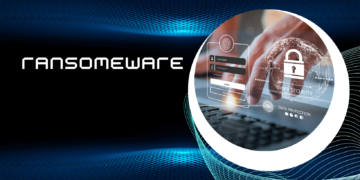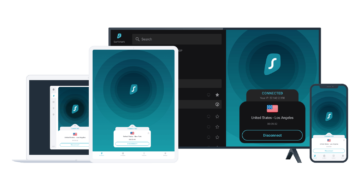Implementing an ISO 27001-compliant Information Security Management System (ISMS) is essential for protecting valuable data, but it’s not without challenges. One of the biggest hurdles for businesses is balancing effective security controls with the need for smooth day-to-day operations. When security measures are too restrictive, they can disrupt regular workflows, making it hard for teams to get their work done efficiently.
In this post, we’ll explore how to implement an ISO 27001-compliant ISMS that strengthens your security posture while keeping business operations running smoothly.
1. Grasp the Fundamentals of ISO 27001
Understand that ISO 27001 is a globally recognised standard for information security management, focusing on safeguarding data confidentiality, integrity, and availability. Key elements to address include:
- Defining the ISMS Scope: Outline the areas and data your ISMS will cover.
- Risk Management: Identify, evaluate, and prioritise security risks.
- Implementing Controls: Choose from 114 controls in Annex A tailored to your organisation’s needs.
- Establishing Policies: Develop rules for data access, incident management, and security protocols.
Familiarising yourself with these principles is critical for a successful ISMS. Learn more about ISO 27001 from the British Standards Institution (BSI).
2. Secure Senior Management Commitment
Gaining support from top management is pivotal for ISO 27001 success. Highlight the advantages, including:
- Improved data security and regulatory compliance.
- Enhanced customer trust and market competitiveness.
- Mitigated risks of costly data breaches.
Emphasise the need for resources such as funding, staff, and time to achieve certification effectively.
3. Define a Clear Scope for Your ISMS
Set boundaries for your ISMS by identifying the organisational areas and information assets it will protect. Consider factors like:
- The criticality of specific data and assets.
- Threats and vulnerabilities unique to your business.
- Available resources and business goals.
This approach ensures your ISMS remains targeted and effective.
4. Perform a Comprehensive Risk Assessment
Conducting a risk assessment is a cornerstone of ISO 27001 compliance. Follow these steps:
- Identify Critical Assets: Include customer data, financial records, and intellectual property.
- Analyse Threats: Evaluate risks such as cyberattacks, data loss, or unauthorised access.
- Prioritise Risks: Rank risks based on their likelihood and potential impact.
Document findings to guide your security measures. For detailed guidance, check ISO’s official risk management process.
5. Select and Implement Risk Treatments
Develop a strategy to address identified risks. Options include:
- Mitigation: Apply security controls like multi-factor authentication and regular backups.
- Transference: Invest in cyber insurance to offset potential financial losses.
- Avoidance: Discontinue risky practices or technologies.
- Acceptance: Acknowledge minimal risks that fall within tolerance levels.
Tailor your risk treatment plan to align with ISO 27001’s Annex A controls for maximum effectiveness.
6. Develop and Document Policies and Procedures
Draft comprehensive policies to guide your organisation. Essential policies include:
- Information Security Policy: Sets the overall security tone and commitment.
- Access Control Policy: Restricts data access to authorised personnel.
- Incident Response Policy: Outlines steps for managing security breaches.
- Risk Treatment Policy: Defines your approach to assessing and mitigating risks.
Ensure these policies are accessible and regularly reviewed to reflect organisational and regulatory changes.
7. Roll Out the ISMS and Train Your Team
After setting up your ISMS, ensure employees are equipped to uphold security standards by:
- Identifying Threats: Training on recognising phishing attempts and suspicious activities.
- Adhering to Security Protocols: Emphasising compliance with established guidelines.
- Reporting Incidents: Creating clear pathways for quick reporting and resolution of security issues.
Consistent training fosters a security-conscious workforce and minimises human error.
8. Monitor, Audit, and Improve Continuously
Regular evaluation ensures your ISMS remains effective. Key activities include:
- Internal Audits: Verify compliance with ISO 27001 and operational effectiveness.
- Ongoing Risk Assessments: Address emerging threats and adapt controls.
- Management Reviews: Keep leadership informed and engaged.
Act on audit findings promptly to maintain a robust security posture.
9. Prepare for ISO 27001 Certification
Achieving certification demonstrates your organisation’s commitment to information security. Prepare by:
- Ensuring all documentation meets ISO 27001 standards.
- Conducting a pre-audit assessment to identify gaps.
- Cooperating fully during the external audit, which includes a document review and on-site assessment.
For more about certification, explore UKAS-accredited certification bodies.
10. Commit to Continual Improvement
ISO 27001 compliance is an ongoing journey. Regularly update your ISMS to:
- Address new security threats and vulnerabilities.
- Reflect changes in organisational structure or objectives.
- Incorporate feedback from audits and management reviews.
This commitment ensures long-term resilience and security.
Final Thoughts
Implementing an ISO 27001-compliant ISMS not only safeguards your organisation’s data but also enhances stakeholder confidence. By following these steps, you can create a dynamic and effective security framework. For further resources, visit Cyber Essentials, a UK government initiative for improving organisational cyber resilience.
























